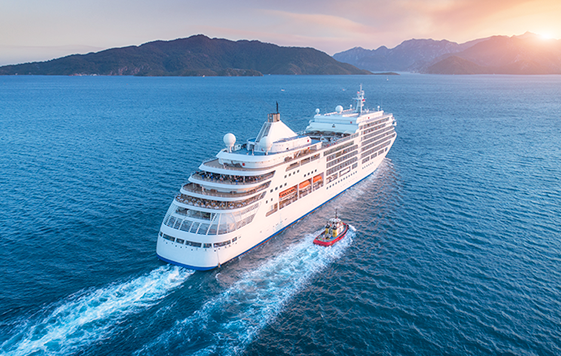At the beginning of September, marine industry professionals gathered in Bergen, Norway for Maritime Hybrid & Electric Conference to hear and share their views on the future of the maritime industry. Sea transport is growing, but tighter standards and regulations are putting pressure on achieving cleaner shipping. One way to reduce emissions caused by shipping is to switch to powering vessels with electricity, either partly (hybrids) or completely. Accordingly, the number of batteries installed on ships is increasing exponentially. Along with the increase of using powerful batteries, the significance of efficient cooling is emphasized.
According to the International Maritime Organization (IMO), shipping will grow by about 30% over the next 30 years. Although shipping is otherwise environmentally friendly, the emissions it produces are enormous. Reducing emissions is now critical, and the IMO is aiming to cut ships’ CO2 emissions by 50% by 2050.
A paradigm shift in shipping
In many respects, Norway can be seen as a driver of sustainable development in the maritime industry. Their objective is to reduce ships’ CO2 emissions by half and reach CO2-free ports by 2030. Norway doesn’t want to be the forerunner in reducing ship emissions only for ecological reasons, but because of the paradigm shift to sustainability in sea transport. In order to curb climate change, new requirements will be imposed on shipping: CO2 emissions will be regulated, and they will have a cost. The industry will also see new requirements for emissions of hazardous gases. Due to the new regulation, Norway sees a massive business opportunity in reducing emissions.
The installation of batteries on ships increasing rapidly
According to statistics by Maritime Battery Forum, the number of vessels using batteries will increase exponentially in the next few years. Ships under construction will see a significant rise already this year: in 2018 there were only a few battery-powered ships being built, whereas this year there are over a hundred of them. Next year the number will be over 150.
For the most part, batteries are being installed on ships operating on the coast. By ship type, the most batteries are utilized in car and passenger ferries, such as the Ship of the Year 2019, Color Hybrid, whose batteries’ water cooling was supplied by Adwatec. Cruise ships have also started to get batteries installed on them – mainly for image reasons – and the number will grow rapidly, estimates Maritime Battery Forum.
Hybrids are built for intermediate water depths, and their use will grow dramatically. In addition to hybrid ships, all-electric ships are becoming more common on short routes, in fjords and rivers. On long-distance ships, batteries are used to balance power fluctuations and to reduce emissions in ports.
The use of batteries is just beginning, and the number of vessels on which they will be installed is huge. In addition to car and passenger ferries, batteries will be installed first on harbour tugboats. They are very powerful and cause a lot of emissions in ports.
High-capacity batteries are cooled with water
The batteries are cooled with air or water. Air-cooled batteries are sufficient to a certain point, but with high discharge or charging power, water cooling must be used. Another advantage of water cooling compared to air cooling is that as the cooling need of the batteries increases with their internal resistance over the years, it is easy to grow the cooling power reserve by raising the flow or changing the heat exchanger. Using air, increasing the cooling power is more difficult.




